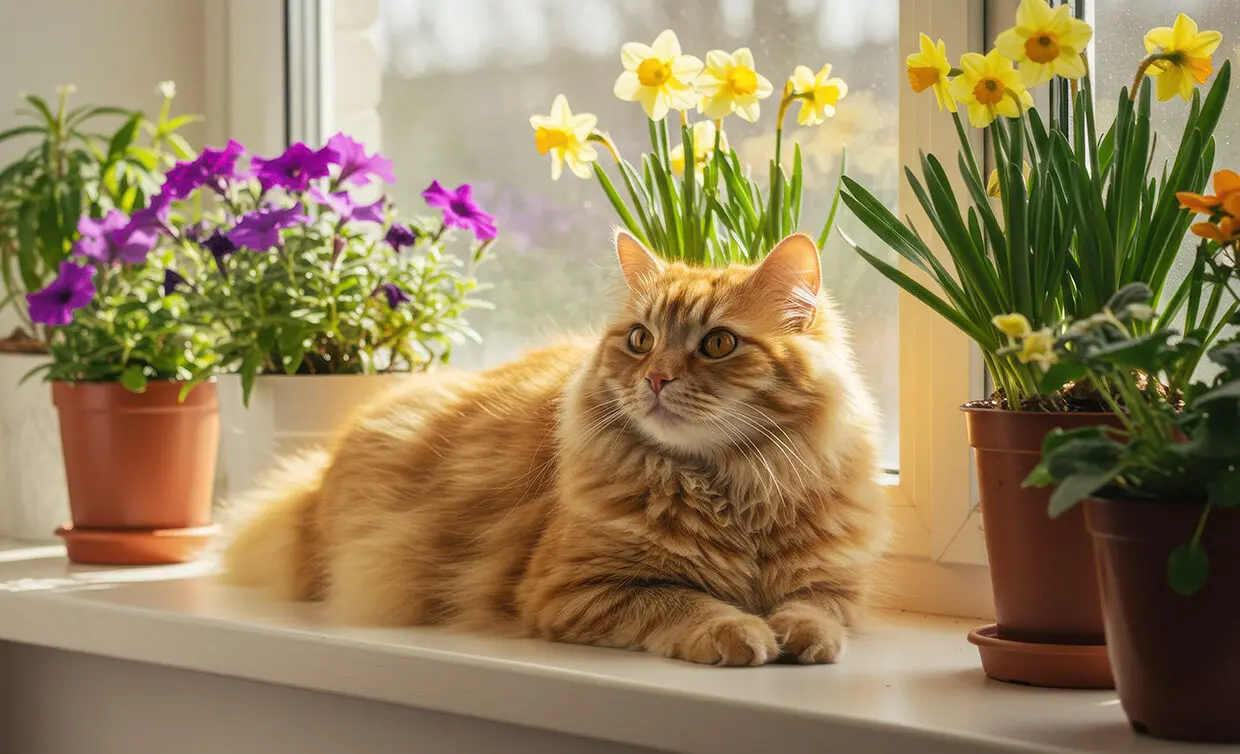Flowers brighten our homes and gardens, but some blooms can be dangerous to our feline friends. If you’re wondering what flowers are toxic to cats, the answer is, unfortunately, quite a few. Even a small amount of certain plants and flowers can make your cat seriously ill, and in some cases, be life-threatening. Knowing which varieties to avoid and how to respond if your cat ingests a toxic plant can help keep them safe.
Why Some Flowers Are Dangerous to Cats
Many plants contain natural compounds that protect them from insects or animals. While these substances may be harmless to humans, they can act as a poisonous substance for cats. Depending on the species, toxic parts of the plant can include the petals, leaves, stems, pollen, or bulbs.
Toxicity levels vary, and some flowers are only mildly toxic to cats, causing minor gastrointestinal upset, while others are highly toxic and can cause organ damage or death. The safest approach is to avoid bringing dangerous plants into your home or garden altogether.
Common Flowers and Plants Toxic to Cats
Below are some of the most common plants and flowers that are toxic to cats. If you suspect your cat has eaten or even licked any of these, contact a veterinarian immediately.
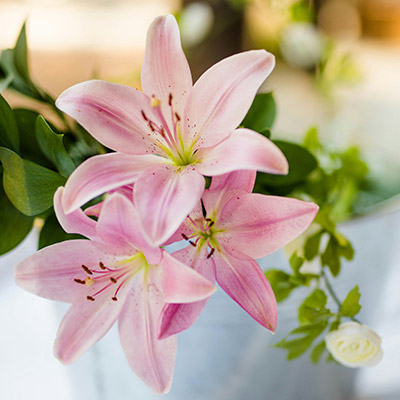
Lilies (Highly Toxic)
Lilies—especially Tiger lilies, Easter lilies, and Asiatic lilies—are among the most dangerous plants for cats. All parts of the plant are toxic, including pollen and water from the vase. Even a small amount can cause kidney failure within 36–72 hours.
Symptoms: drooling, vomiting, lack of appetite, lethargy, and increased urination followed by little to none.
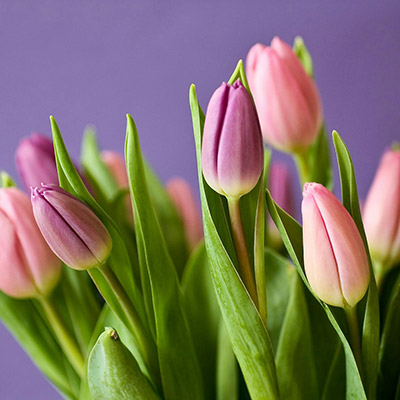
Tulips and Hyacinths
Part of the lily family, tulips and hyacinths contain toxic compounds concentrated in their bulbs. Chewing on these can cause gastrointestinal upset and irritation.
Symptoms: drooling, vomiting and diarrhea, depression, and in severe cases, breathing difficulties.
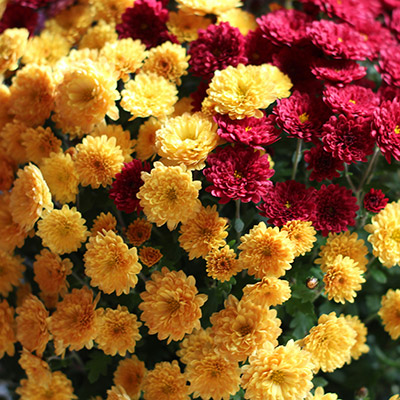
Chrysanthemums
These popular fall flowers contain pyrethrins, an ingredient also found in some flea and tick medication that is poisonous to cats.
Symptoms: drooling, vomiting, diarrhea, and lack of appetite.
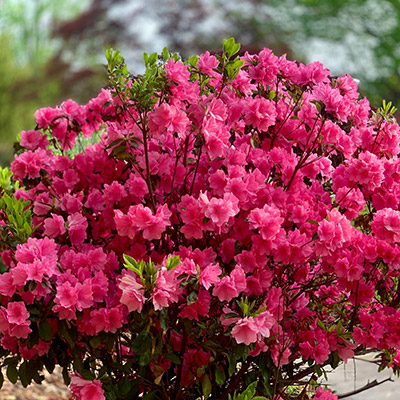
Azaleas and Rhododendrons
Even a small amount of these flowering shrubs can be dangerous to cats due to a toxin called grayanotoxin.
Symptoms: vomiting, diarrhea, weakness, abnormal heart rhythms, and seizures.
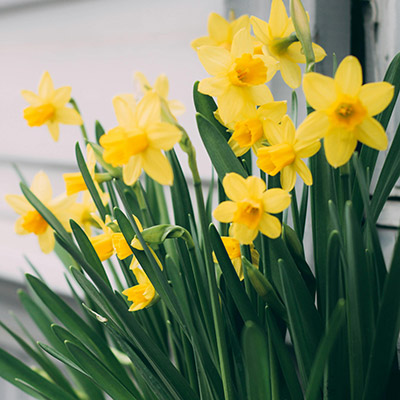
Daffodils
Daffodils contain lycorine, which triggers vomiting, and crystals in the bulbs that can cause severe illness.
Symptoms: drooling, vomiting, abdominal pain, and lack of appetite.

Cyclamen
This indoor favorite contains saponins, with the highest concentration in the tubers.
Symptoms: drooling, vomiting, diarrhea, and heart rhythm changes.
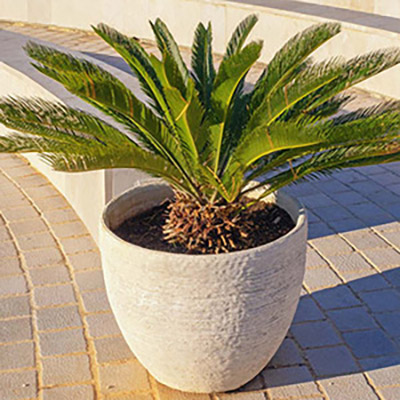
Sago Palm (Not a Flower, but Highly Toxic)
All parts of the sago palm are highly toxic, especially the seeds. Even one seed can be fatal.
Symptoms: vomiting, diarrhea, seizures, and liver failure.
Signs Your Cat May Have Eaten a Toxic Plant
Cats don’t always show symptoms right away. Signs can appear within minutes or take hours. Watch for:
- Drooling and vomiting
- Diarrhea or vomiting and diarrhea together
- Lack of appetite
- Lethargy or weakness
- Tremors or seizures
- Changes in urination or drinking habits
If you suspect your cat has ingested a toxic plant, do not wait for symptoms—seek veterinary help immediately.
What to Do If Your Cat Eats a Toxic Plant
- Call your veterinarian or an animal poison control hotline immediately.
- ASPCA Animal Poison Control: (888) 426-4435
- Pet Poison Helpline: (855) 764-7661
- Remove any plant material from your cat’s mouth, paws, or fur.
- Take a sample or photo of the plant for identification.
- Follow your vet’s instructions carefully—do not try to make your cat vomit unless directed.
Feline-Friendly Flower Alternatives
If you love having fresh flowers, there are plenty of feline-friendly options that are safe for cats. Consider:
- Roses (without added chemicals)
- Gerbera daisies
- Snapdragons
- Orchids
- Zinnias
Always confirm a plant’s safety before bringing it into your home.
How to Keep Your Cat Safe from Toxic Plants
- Know the toxic plants: Familiarize yourself with common dangerous species.
- Place plants out of reach: Use shelves or hanging baskets.
- Provide safe greenery: Offer cat grass to satisfy chewing urges.
- Keep bouquets cat-safe: Ask florists for arrangements free of plants poisonous to cats.
FAQ: Flowers and Plant Safety for Cats
1. What flowers are most toxic to cats?
Lilies are the most dangerous, including Easter, Tiger, and Asiatic varieties. Even a small amount—or just the pollen—can cause kidney failure. Other toxic flowers include tulips, hyacinths, chrysanthemums, azaleas, daffodils, and cyclamen.
2. Can cats get sick from smelling flowers?
While simply smelling a flower is usually safe, pollen can cling to a cat’s fur and be ingested during grooming. This is especially dangerous with lilies, so it’s best to keep toxic plants out of your home entirely.
3. What symptoms should I look for if my cat eats a toxic plant?
Watch for drooling, vomiting, diarrhea, lack of appetite, lethargy, or changes in urination. Severe cases can involve seizures, tremors, or collapse.
4. What should I do if I suspect my cat ate a poisonous plant?
Call your veterinarian or an animal poison control hotline immediately. Remove any plant material from your cat’s mouth or fur and bring a sample or photo of the plant to your vet.
5. What flowers are safe for cats?
Safe options include roses (without pesticides), orchids, snapdragons, zinnias, and gerbera daisies. Always confirm a plant’s safety before bringing it home.
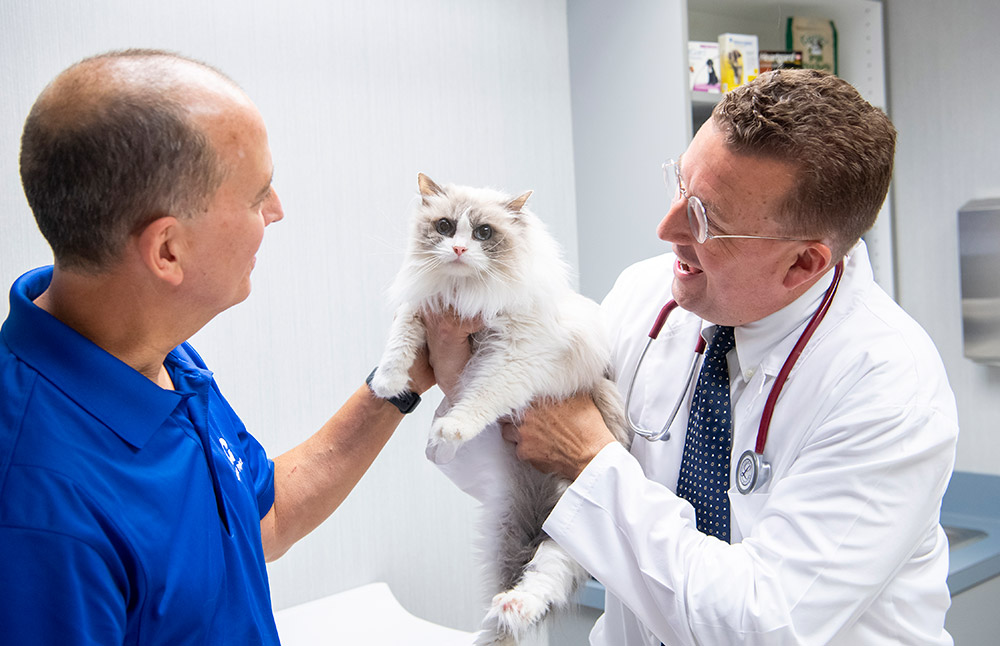
Partner with Hershey Veterinary Hospital
At Hershey Veterinary Hospital, our team is here to help protect your cat from toxic plants and other household dangers. If your cat has been exposed to a toxic plant or is showing signs of illness, we offer fast, compassionate care to give them the best chance of recovery. Contact us to get started or request an appointment.
We can also recommend safe plants, offer preventive care, and educate you on plants and flowers that are dangerous to cats.
Final Thought:
Knowing what flowers are toxic to cats is an important part of being a responsible pet owner. With awareness, preventive measures, and quick action in emergencies, you can keep your feline friend safe while still enjoying the beauty of plants.

